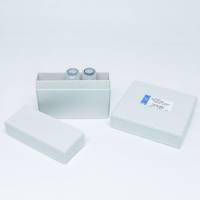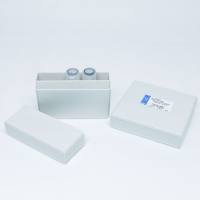Understanding Asthma
互联网
| What is asthma? | |
| Intrinsic asthma | |
| An asthma attack | |
| Extrinsic asthma | |
| First exposure | |
| Second exposure |
WHAT IS ASTHMA?Asthma is a chronic lung disease characterized by airway inflammation and narrowing. Hypersensitivity to various stimuli or allergens causes muscles around the bronchial tubes to tighten, producing bronchospasm and constricted breathing. Asthma is either intrinsic or extrinsic . For both types, an asthma attack follows the same process. (See An asthma attack and Extrinsic asthma .) INTRINSIC ASTHMAThis type of asthma, which has no obvious external cause, is more common in children under age 3 and adults over age 30. It's usually preceded by severe respiratory infection that affects nerves or cells near the surface of the bronchial tubes, as shown below. Triggers ― such as irritants; exercise; fatigue; stress; and emotional, endocrine, temperature, and humidity changes ― may provoke bronchoconstriction and an asthma attack. <center> <a name="ch0009aintrinsicasthma"></a> <a name="ch0009aintrinsicasthma"></a> </center>AN ASTHMA ATTACKA person having an asthma attack has difficulty breathing and increases the use of chest muscles to assist with breathing. During an attack, muscles surrounding the bronchial tubes tighten (bronchospasm), narrowing the air passage and interrupting the normal flow of air into and out of the lungs. Air flow is further interrupted by an increase in mucous secretion, formation of mucous plugs, and swelling of the bronchial tubes. If an attack continues, bronchospasm and mucous build-up traps air in the alveolar sacs, which hinders air exchange. <center> <a name="ch0009aanasthmaattack"></a> <a name="ch0009aanasthmaattack"></a> <h3> <a name="ch0009aanasthmaattack"></a> <a name="ch0009aanasthmaattack"></a> <a name="ch0009aextrinsicasthma">EXTRINSIC ASTHMA</a> </h3> <a name="ch0009aextrinsicasthma"></a> <p> <a name="ch0009aextrinsicasthma"></a> <a name="ch0009aextrinsicasthma">Persons with extrinsic asthma are hyper-responsive to environmental allergens, such as pollen, ragweed, animal dander, dust, mold, aerosols, food additives, tobacco smoke, and air pollution. Most common in children and adolescents, this type fades with age and avoidance of specific allergens.</a> </p> <h4> <a name="ch0009aextrinsicasthma"></a> <a name="ch0009aextrinsicasthma"></a> <a name="ch0009afirstexposure">First exposure</a> </h4> <a name="ch0009afirstexposure"></a> <p> <a name="ch0009afirstexposure"></a> <a name="ch0009afirstexposure">Allergens entering the body for the first time (1) are inhaled and absorbed into lung tissues (2). There, they trigger immune cells to produce abnormal amounts of allergen-specific defense proteins called immunoglobulin E (IgE) antibodies (3). The antibodies attach to mast cells (4), which contain chemical mediators that are responsible for allergic signs and symptoms. These cells accumulate in tissues exposed to the environment, such as mucous membranes of the respiratory tract.</a> </p> <h4> <a name="ch0009afirstexposure"></a> <a name="ch0009afirstexposure"></a> <a name="ch0009asecondexposure">Second exposure</a> </h4> <a name="ch0009asecondexposure"></a> <p> <a name="ch0009asecondexposure"></a> <a name="ch0009asecondexposure">On subsequent exposure, IgE antibodies recognize the allergens (5) and trigger the mast cells to release histamine and other chemical mediators (6). An allergic reaction (7) follows in the lungs: a hyperreactive response, producing bronchoconstriction and bronchospasm; and an inflammatory response (8), producing bronchial edema, secretions, and thick sticky mucus.</a> </p> <center> <a name="ch0009asecondexposure"></a> <a name="ch0009asecondexposure"></a> </center> </center> |







